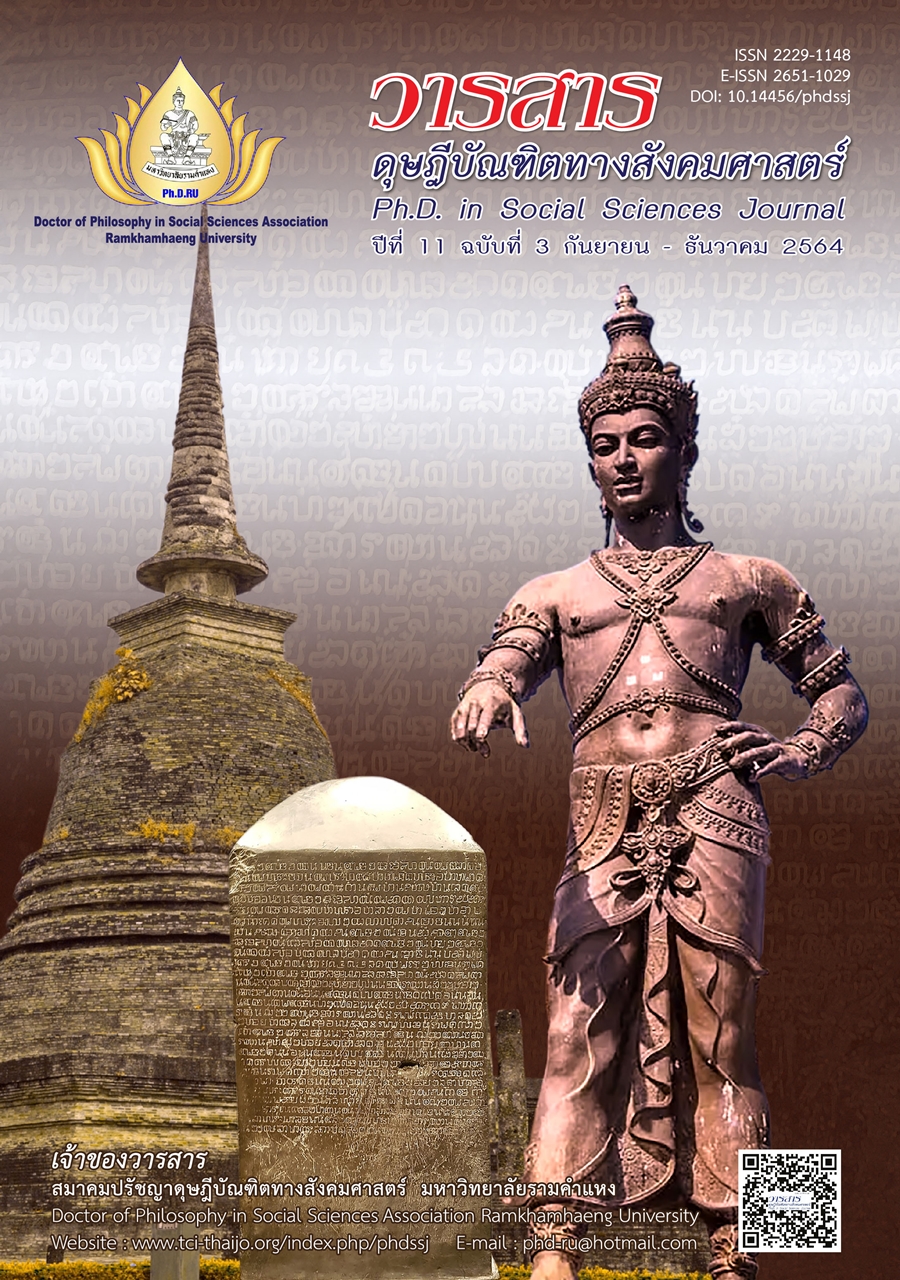Factors Driving Marketing Mix and Customer Relationship Management Affecting Performance of Outdoor Billboard Businesses in Thailand
Main Article Content
Abstract
In objectives of this research article are to study, (1) the congruence of the driving factors model, human resource management technology and leadership affecting the marketing mix, customer relationship management (CRM) and the performance of outdoor billboard businesses in Thailand with empirical data. (2) the factors of technology, Human Resource Management (HRM) and leadership influencing the marketing mix. (3) the factors of technology, HRM, leadership and the marketing mix influencing CRM. (4) examines the factors of technology, HRM, leadership, marketing mix and CRM influencing the performance of the businesses under study. The researcher conducted quantitative research to collect data from 662 administrators. The statistics used in data analysis were frequency distribution, percentage, mean, and standard deviation. The techniques of confirmatory factor analysis and the structure equation model were also employed.
Findings are as follows: The analysis of the structural equation model was in congruence with the empirical data at a good level. The test of the influence of factors in each aspect found the following: Technology exhibited, Human Resource Management exhibited and Leadership exhibited a positive influence on the marketing mix and a positive influence on Customer Relationship Management. By all factors and customer relationship management exhibited a positive influence on business performance.
Article Details
Academic articles, research articles, and book reviews in the Ph.D. in Social Sciences Journal are author’s opinions, and not the publisher’s, and is not the responsibility of the Ph.D. in Social Sciences Journal Philosophy Association, Ramkhamhaeng University. (In the case that research is done on human, the researcher has to be trained in Ethics for Doing Research on Human Training and has to produce the evidence of the training).
References
Advertising & Sign Producing Association. (2017). List of advertising and sign enterprises on 2017. Retrieved from http:// www.aspathailand.org [In Thai]
Chaichan, S. (2007). Marketing management (5th ed.). P.A Living. [In Thai]
Department of Business Development. (2018). Enterprise Data Warehouse (EDW). Retrieved from http://datawarehouse.dbd.go.th/searchJuristicInfo [In Thai]
Faksang, D. (2013). The success of small and medium enterprises in textiles and clothing industry. Sripatum Chonburi Journal, 15(3), 54-60. [In Thai]
Ghalenooie, M. B., & Sarvestani, H. K. (2016). Evaluating human factors in customer relationship management case study: Private banks of Shiraz City. Procedia Economics and Finance, 36(Supplement C), 363-373.
Hsiao, C., Lee, Y.-H., & Chen, W.-J. (2015). The effect of servant leadership on customer value co-creation: A cross-level analysis of key mediating roles. Tourism Management, 49(Supplement C), 45-57.
Juttner, U., Christopher, M., & Baker, S. (2007). Demand chain management integrating marketing and supply chain management. Industrial Marketing Management, 36(3), 377-392.
Kotler, K. (2015). Marketing management (15th ed.). Pearson.
Langviniene, N., & Daunoraviciute, I. (2015). Factors influencing the success of business model in the hospitality service industry. Procedia-Social and Behavioral Sciences, 213, 902-910.
Malshe, A., Friend, S. B., Al-Khatib, J., Al-Habib, M. I., & Al-Torkistani, H. M. (2017). Strategic and operational alignment of sales-marketing interfaces: Dual paths within an SME configuration. Industrial Marketing Management, 66(Supplement C), 145-158.
Navimipour, N. J., & Soltani, Z. (2016). The impact of cost, technology acceptance and employees’ satisfaction on the effectiveness of the electronic customer relationship management systems. Computers in Human Behavior, 55(Part B), 1052-1066.
Phithaksikul, S., Sawang, S., & Chienwattanasook, K. (2019). The successful model to promote Small and Medium Enterprises (SME’s) in the northern provinces of Thailand. Ph.D. in Social Science Journal, 9(1), 15-29. [In Thai]
Prathomsirikulm, Y. (2011). The successful health care service business management model of private hospital in Thailand. Journal of Business Administration, 34(130), 14-35. [In Thai]
Rakariyatham, A., & Ploysri, S. (2016). A development of a causal model towards the success in international business engagement of small and medium-sized enterprises in upper northern Thailand. Journal of Accountancy and Management, 8(2), 12-21. [In Thai]
Termsanganwong, S. (2013). The business achievement factors of five star OTOP Production Chanpion (OPC) entrepreneur within Chiangmai province: Case study at Sansai District. Payap University Journal, 23(1), 1-20. [In Thai]
To, W. M., Martin, E. F., & Yu, B. T. W. (2015). Effect of management commitment to internal marketing on employee work attitude. International Journal of Hospitality Management, 45(Supplement C), 14-21.
Trainor, K. J., Rapp, A., Beitelspacher, L. S., & Schillewaert, N. (2011). Integrating information technology and marketing: An examination of the drivers and outcomes of e-marketing capability. Industrial Marketing Management, 40(1), 162-174.
Williams, P., Ashill, N. J., Naumann, E., & Jackson, E. (2015). Relationship quality and satisfaction: Customer-perceived success factors for on-time projects. International Journal of Project Management, 33(8), 36-50.
Yang, L. R., Huang, C. F., & Hsu, T. J. (2014). Knowledge leadership to improve project and organizational performance. International Journal of Project Management, 32(1), 40-53.


